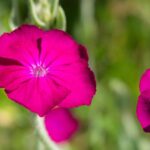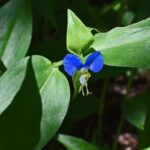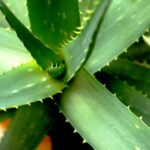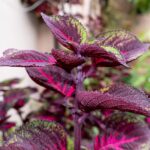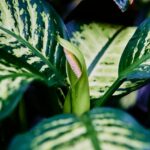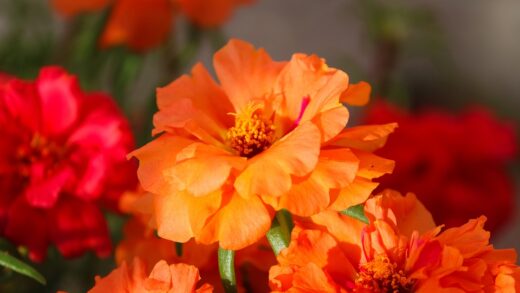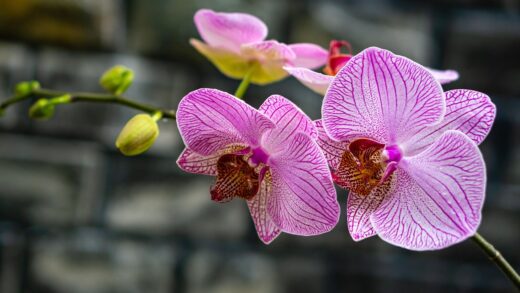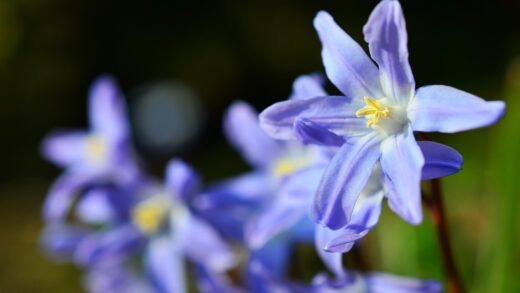The Abyssinian gladiolus, or as many know it, the fragrant gladiolus or acidanthera, is a truly special plant in gardens, whose elegant appearance and delicate fragrance enchant everyone. However, for this beauty to shine in its full glory, ensuring an adequate supply of nutrients is essential. It is not enough just to plant the corms in the ground and wait for a miracle; conscious and expert fertilization is the key to abundant flowering and healthy growth. In this article, we will explore in detail what nutrients this wonderful plant needs and how to time fertilization for the best results. Let’s discover together the secrets of nourishing the Abyssinian gladiolus, so that the jewels of our garden may dazzle us year after year.
The Secrets of Soil Preparation
The alpha and omega of successfully cultivating the Abyssinian gladiolus is proper soil preparation. This plant prefers well-drained, loose, humus-rich soils that are slightly acidic to neutral, ideally with a pH between 6.0 and 7.0. Before planting the corms, it is advisable to loosen the soil to a depth of at least 20-30 cm (8-12 inches), so that the roots can spread easily and access the necessary water and nutrients. In overly compact, clayey soils, you can improve the structure and drainage by incorporating sand and mature compost.
Organic matter plays an extremely important role in maintaining and improving soil fertility. Mature compost or well-rotted manure not only enriches the soil with valuable nutrients but also improves its water retention capacity and promotes the activity of beneficial soil microorganisms. It is important, however, to avoid fresh, immature manure, as it can burn young roots and be a source of various diseases. Organic matter incorporated during autumn soil preparation has enough time to decompose properly and integrate into the soil structure by spring planting.
A soil test can also be very beneficial, especially if you have previously encountered problems with plant cultivation or if you are starting to garden in a new area. A thorough soil analysis provides an accurate picture of the soil’s nutrient content and pH level, allowing you to address any deficiencies in a targeted manner. This way, you avoid unnecessary fertilization, which is not only more cost-effective but also protects the environment. Based on the analysis results, an appropriate nutrient supplementation plan can be easily developed with the help of an expert.
When fertilizing directly before planting, caution is necessary. If autumn base fertilization has been carried out, it is sufficient in spring to apply only small amounts of easily available nutrients. In this case, a balanced, slow-release fertilizer or a small amount of bone meal incorporated into the soil can promote vigorous corm sprouting and rapid root system development. Always follow the use instructions of the chosen product to avoid the risk of overdosing.
More articles on this topic
The Role of Essential Nutrients: Nitrogen, Phosphorus, and Potassium
Among the macronutrients essential for plants, nitrogen, phosphorus, and potassium (often referred to as NPK) play the most important role in the healthy development and abundant flowering of the Abyssinian gladiolus. Nitrogen is primarily responsible for the growth of green mass, i.e., the leaves and stem. In the absence of an adequate amount of nitrogen, the plant remains stunted, its leaves turn yellow, and flowering may be weaker. However, excessive nitrogen intake should also be avoided, as it can lead to overly lush foliage at the expense of flowering, and the plant becomes more susceptible to diseases.
Phosphorus is crucial for root formation, flower and seed development, and energy transfer processes. In the case of the Abyssinian gladiolus, an adequate supply of phosphorus is essential for the healthy development of the corms and for the accumulation of reserve nutrients needed for the following year’s flowering. In case of phosphorus deficiency, the root system develops poorly, flowering may be delayed or absent, and the leaves may take on a dark green, sometimes purplish hue. Bone meal, for example, is an excellent natural source of phosphorus.
Potassium, as a kind of “strengthening” element, contributes to the overall health of the plant, its stress tolerance, and its resistance to diseases. It aids in water management, strengthens cell walls, and improves the quality, color, and longevity of the flowers. In case of potassium deficiency, the leaf margins may turn yellow or brown, the plant may appear wilted, and become more susceptible to fungal diseases. Wood ash (if it comes from clean, untreated wood) can be a good source of potassium, but it should be used with caution as it can alkalize the soil.
The correct choice of the NPK ratio is therefore critical. For the Abyssinian gladiolus, a balanced fertilizer or one with a slight predominance of phosphorus and potassium is generally recommended. At the beginning of the growing season, during shoot growth, a little more nitrogen can be beneficial, while as flowering approaches and during it, the need for phosphorus and potassium increases. It is important that the nutrients are supplied to the plant in an available form and at the right time.
More articles on this topic
The Importance of Micronutrients and Organic Matter
Although nitrogen, phosphorus, and potassium are the main players, micronutrients, also known as trace elements, are just as indispensable for the healthy life cycle of the Abyssinian gladiolus, even if they are only needed in small quantities. These include, among others, iron, manganese, zinc, boron, copper, and molybdenum, which are components of vital enzymes and participate in numerous physiological processes, such as photosynthesis, respiration, and hormone regulation. Their deficiency can cause specific symptoms, such as yellowing of the leaves between the veins (chlorosis) in case of iron or manganese deficiency.
Organic matter, such as mature compost, leaf mold, or vermicompost, not only provides macro and micronutrients in a slowly and continuously decomposable form but also improves soil structure, its water retention capacity, and aeration. It promotes the proliferation of beneficial soil bacteria and fungi, which contribute to the release of nutrients and make them available to the plant. Regular supplementation of organic matter, therefore, ensures soil fertility in the long term and reduces complete dependence on mineral fertilizers.
For the supplementation of micronutrients, complex fertilizers that also contain trace elements or special preparations that can be applied as foliar fertilizers are available. Foliar fertilization can be particularly effective as a quick intervention when deficiency symptoms are noticed, as the nutrients are absorbed directly through the leaves. However, it is important to note that foliar fertilization does not replace adequate nutrient uptake through the roots but only supplements it. Always follow the instructions on the product packaging regarding the correct concentration and application frequency.
The importance of soil life cannot be overemphasized. A rich, diverse microbial community helps to suppress pathogens and promotes the nutrient cycle. Avoid excessive chemical treatment of the soil and strive to maintain biological balance. Mulching with organic materials, such as tree bark or straw, not only keeps weeds in check and conserves moisture but also contributes, through its slow decomposition, to increasing the soil’s nutrient content and stimulating soil life.
Fertilization Strategies and Timing During the Growing Season
The timing and method of fertilizing the Abyssinian gladiolus greatly influence the plant’s development and flowering propensity. The first nutrient application usually occurs when planting the corms or shortly after sprouting. At this time, a starter fertilizer with a lower nitrogen content but rich in phosphorus and potassium (e.g., NPK ratio 5-10-10) can help promote strong root system development and lay the foundation for later abundant flowering. This fertilizer should be carefully incorporated into the topsoil or the bottom of the planting hole, ensuring it does not come into direct contact with the corm.
When the shoots reach a height of 15-20 cm (6-8 inches) and intensive leaf and stem growth begins, you can stimulate foliage development with a more balanced liquid fertilizer (e.g., NPK 10-10-10) or one that is slightly nitrogen-dominant. This liquid fertilization can be repeated every 2-3 weeks until the flower stalk appears. It is important to always apply liquid fertilizer to moist soil to avoid burning the roots and to allow the plant to absorb the nutrients more easily.
Before the appearance of flower buds and in the initial phase of flowering, fertilization in which phosphorus and potassium predominate comes to the forefront again. These elements are essential for the development of large, brightly colored flowers and for prolonging the duration of flowering. An NPK of 5-10-10 or similar, a special fertilizer to stimulate flowering, or an organic alternative such as bone meal and a cautious addition of wood ash, can be a good choice during this period. Ensure that during flowering, excessive nitrogen intake is no longer desirable, as it could harm flower quality.
After flowering, the task of nutrient supplementation does not end, especially if you want to preserve the corms for the next season. During this period, the plant stores energy in the corm for the next year’s growth and flowering. A final, potassium-rich fertilization can help this process and increase the corms’ winter hardiness or storage capability. After this, allow the foliage to die back and yellow naturally before digging up the corms and storing them for winter.
The Dangers of Over-Fertilization and the Correct Proportions
Although nutrients are vital for the Abyssinian gladiolus, the principle “less is sometimes more” also applies here. Over-fertilization can cause at least as much, if not more, damage as nutrient deficiency. Overdosed mineral fertilizers can burn the plant’s roots, leading to disturbances in water and nutrient uptake, and even to the plant’s death. This is especially true for fast-dissolving, concentrated fertilizers, so always follow the manufacturer’s recommended doses and application frequencies.
Excessive nitrogen intake, as mentioned earlier, stimulates strong foliage growth at the expense of flowering. Such plants tend to become leggy, their stems weaken, and they fall over more easily. Furthermore, due to the overly loose cell structure, they become more susceptible to pests and fungal diseases, such as Fusarium wilt. The goal is balanced growth, where foliage and inflorescence are proportionate.
Excessive intake of phosphorus or potassium causes direct toxicity symptoms less frequently but can disrupt the nutrient balance in the soil, inhibiting the uptake of other, equally important, elements. For example, too much phosphorus can inhibit the uptake of zinc and iron, while too much potassium can hinder the uptake of magnesium and calcium. Therefore, a balanced fertilization program that takes into account the plant’s current development phase and soil characteristics is important.
The best guide to finding the correct proportions is the plant itself. Observe the color of the leaves, the growth rate, and the quality of flowering. If the plant is healthy, has bright green foliage, and flowers beautifully, the nutrient supply is likely adequate. In case of deficiency symptoms or signs of over-fertilization (e.g., burns on leaf margins, poor flowering), correct your fertilization practices. The use of slow-release organic fertilizers is generally safer, as the risk of overdosing is lower.
Common Nutritional Problems and Their Prevention
Even with the Abyssinian gladiolus, problems due to nutrient deficiency or excess can arise, leaving marks on the plant’s appearance and development. One of the most common signs is yellowing of the leaves (chlorosis). If the older, lower leaves turn yellow first, this usually indicates a nitrogen deficiency. If the younger, upper leaves turn yellow while the veins remain green, it might be a sign of iron deficiency, which often occurs in calcareous, alkaline soils where iron is in a form that is difficult for the plant to absorb.
Symptoms of phosphorus deficiency include poor root development, delayed or sparse flowering, and a dark green, sometimes purplish, coloration of the leaves. This is particularly critical in the seedling stage or during corm development. Potassium deficiency can manifest as yellowing, followed by browning and drying of the leaf margins (leaf margin necrosis), and the plant’s overall resistance also decreases. It is important to recognize the symptoms in time and supplement the missing nutrient in a targeted manner.
Prevention is always better than cure. The most important step is proper soil preparation, including improving soil structure and enriching it with organic matter. In well-prepared, nutrient-balanced soil, plants will be less exposed to deficiency diseases. With regular but moderate fertilization, with a nutrient composition adapted to the plant’s developmental stages, an optimal supply can be maintained.
If deficiency symptoms are detected, applying a foliar fertilizer of the appropriate composition can provide quick help, as the nutrients thus enter the plant directly through the foliage. In the long term, however, the goal is to ensure nutrient uptake through the soil. Avoid “guesswork” fertilization; if unsure, it is better to have a soil analysis done or seek expert advice. A healthy, well-nourished Abyssinian gladiolus will reward care with abundant and fragrant flowering.









